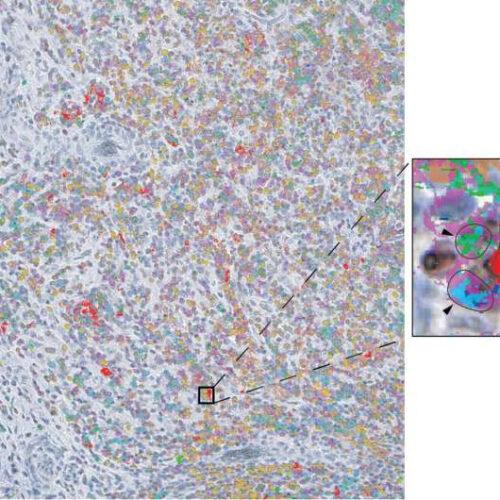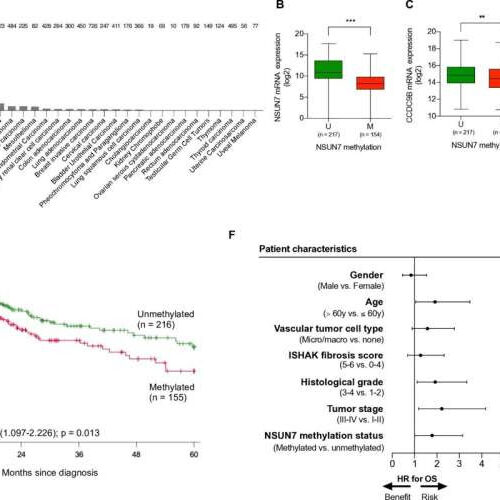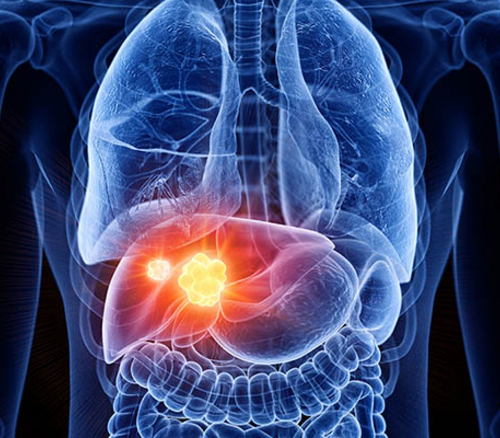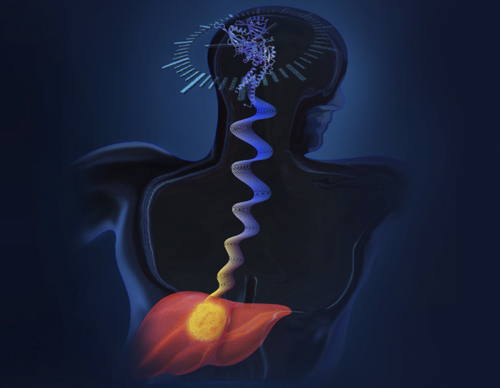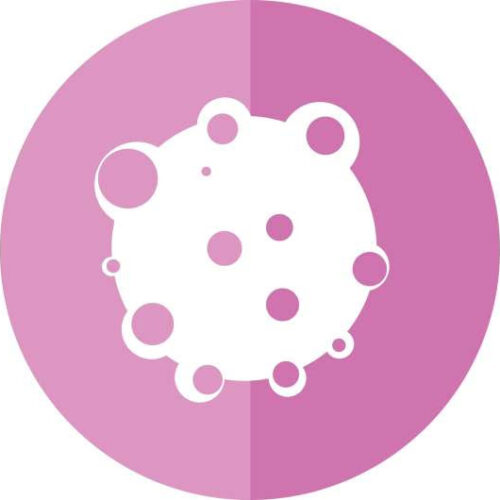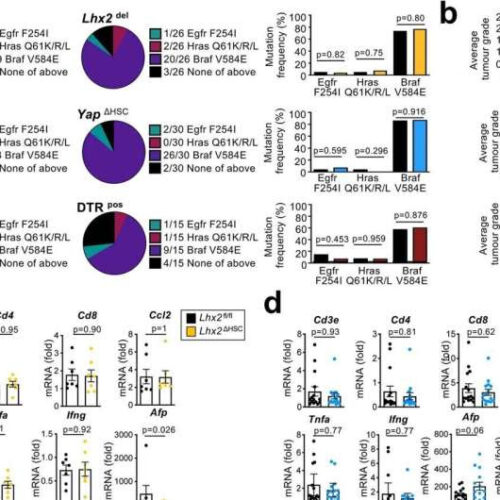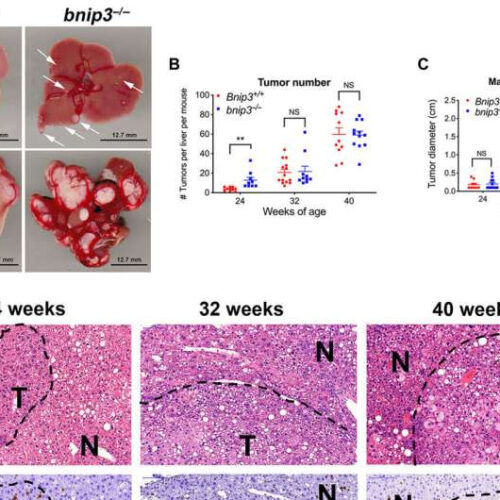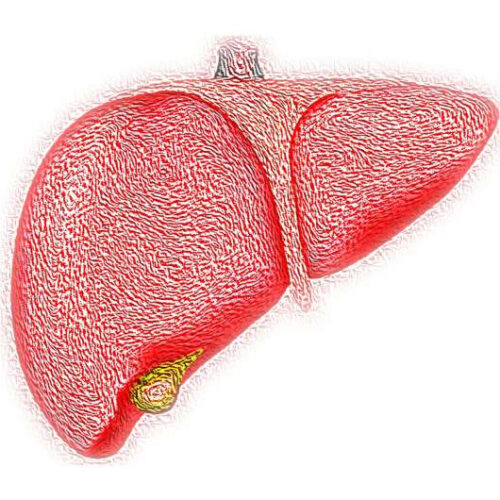by The Mount Sinai Hospital The study revealed how certain immune cell interactions in tumors facilitate response to checkpoint blockade, pointing to potential new approaches to cancer immunotherapy. Credit: Magen et al., Nature Medicine Researchers at the Icahn School of Medicine at Mount Sinai have uncovered a trio of immune cells within tumor niches that are associated with...
Tag: <span>Liver cancer</span>
Epigenetic mechanism associated with clinical outcome and therapeutic vulnerability in liver cancer
by Josep Carreras Leukaemia Research Institute NSUN7 epigenetic loss occurs in human primary HCC tumors in association with worse clinical outcome. (A) Percentage of NSUN7 methylation in the TCGA data set of primary tumors according to cancer type. (B) NSUN7 methylation is inversely correlated with NSUN7 transcript expression in TCGA HCC tumors. (C) NSUN7 methylation is...
New study flips the script on liver cancer
UNIVERSITY OF CALIFORNIA – SAN DIEGO IMAGE: UC SAN DIEGO SCIENTISTS FIND THE PROTEIN ATF4 PREVENTS LIVER DAMAGE AND ITS PROGRESSION TO CANCER BY BLOCKING FERROPTOSIS, AN IRON-DEPENDENT FORM OF LIVER CELL DEATH. CREDIT: UC SAN DIEGO HEALTH SCIENCES Liver cancer is the third leading cause of cancer death and the sixth most common cancer...
Liver cancer research: Iron-dependent cell death could be key to novel combination therapies
by Goethe University Frankfurt am Main The light microscope image shows the liver of a diseased mouse in which many tumours have formed. The tumours are slightly darker in colour, have a rounded shape and are demarcated from the healthy tissue (haematoxylin-eosin stain). Credit: Fabian Finkelmeier, University Hospital Frankfurt Ten years ago, a new type...
Study shows how liver cancer hijacks circadian clock machinery inside cells
KECK SCHOOL OF MEDICINE OF USC IMAGE: PICTURED IS AN ARTIST’S RENDERING OF CIRCADIAN CLOCK PROTEINS BMAL1 AND CLOCK INFLUENCING HEPATOCELLULAR CARCINOMA (HCC) CELL PROLIFERATION. THE STUDY SHOWS THAT IN HUMANS, HCC CELLS RELY ON BMAL1 AND CLOCK FOR SUSTAINED CELL GROWTH. TARGETING CLOCK PROTEINS PROVIDES A NEW PATHWAY TO DEVELOP NOVEL CANCER THERAPIES. CREDIT:...
Liver cancer: How liver cells go astray
by University of Basel One of the main causes of liver cancer is excessive alcohol consumption. Credit: Biozentrum, University of Basel The causes of liver cancer are manifold. In addition to metabolic disorders such as those associated with obesity, the main causes in the western world are infections with hepatitis C virus and high alcohol...
Researchers identify a promising new drug target for rare liver cancer
by Rockefeller University Credit: Pixabay/CC0 Public Domain As a rare and lethal liver cancer that disproportionately harms young adults, fibrolamellar carcinoma is nearly incurable. Surgery can remove the tumor, but no existing therapies are capable of reining in the cancer once it starts to spread throughout the body. Now, a new study demonstrates that fibrolamellar...
Study points toward new ways to prevent liver cancer
by Columbia University Irving Medical Center Characterization of genetic mutations, inflammation, immune cell and tumor markers in mice with genetic HSC depletion, activation of inhibition. Credit: Nature (2022). DOI: 10.1038/s41586-022-05289-6 Almost all liver cancers develop after decades of chronic liver disease, but a new discovery by Columbia researchers may lead to treatments that could break the link....
Increased mitochondria and lipid turnover reduces risk for liver cancer
by University of Chicago Medical Center Loss of BNIP3 promotes HCC initiation and tumor growth. (A) Representative images of HCC tumors forming in the liver of Bnip3+/+ and bnip3−/− mice at 24 and 40 weeks of age following DEN injection. Scale bars, 12.7 mm. (B) Graph of tumor number forming in the liver of Bnip3+/+ (red) and bnip3−/− (blue)...
US residents of Mexican descent may have a higher risk of liver cancer with each successive generation
by American Association for Cancer Research Credit: CC0 Public Domain The risk of hepatocellular carcinoma (HCC) in individuals of Mexican descent living in Los Angeles has increased with each successive generation in the United States, according to results presented at the 15th AACR Conference on the Science of Cancer Health Disparities in Racial/Ethnic Minorities and...

